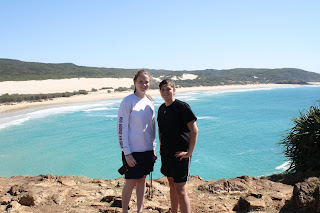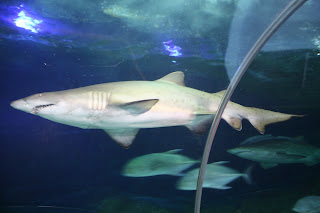This weekend we decided to take a trip down to Brisbane to explore the city life. Brisbane is Queensland’s capital and most populous city. It is the third most populous city in all of Australia behind Sydney and Melbourne. After a two hour train ride from the Sunny Coast, we finally made it to Brissy. And man, was the view different! My university is kind of located in the middle of nowhere, nestled in a small little town right next to a nature preserve. So I’m used to seeing a lot of open land with crazy plants and animals roaming the land. As soon as we got off the train we knew exactly where we were, the tall buildings, the bright lights, the number of people and cars, we definitely made it to the city.
We spent the entire weekend exploring the city. The city is located right on the Brisbane River (the city was actually named after the river), so it was a really pretty sight to see a huge city right on the water. You could definitely tell that we were in the city when you looked into the water, it wasn’t the clear blue that we are used to seeing, but it was still a picturesque view. We went into the heart of the city, where we were surrounded by huge buildings. In the middle of the city there are outlets and other shopping stores that stretch the length of Queen Street. Queen Street is the main street of the city and a huge tourist attraction. We even found some City Roos chilling on some benches on the street. They were awfully cute.
 |
| Queen Street |
 |
| City Roo! |
After doing some shopping, we headed to the City Botanical Garden, which is kind of like Central Park in New York City. It is just a big park on the edge of the city and the river. It was filled with beautiful flowers and other plants, and it was a nice place to take a break from the busy city. When we were walking through the park we saw a few guys who were walking and doing tricks on slacklines, we struck up a conversation and they let us try walking across the lines. This was really hard since the lines were only about an inch thick, but they helped us walk the lines and we had a lot of fun.
Next, we walked over a bridge that took us to the other side of the river and into South Bank. Here we found markets with a lot of fun Australian artifacts and other items for sale. We also found a beach! Yes, that’s right, we found a beach in the middle of the city! Along the river, there are a few lagoons (that is separate from the dirty city river water) surrounded by sand. The lagoons are all a part of Streets Beach, which is another big tourist attraction. We relaxed at the beach, watched some street performers, listened to live bands, and had a drink from a local bar to end our mini vacation away from school.
 |
| Streets Beach |




















































